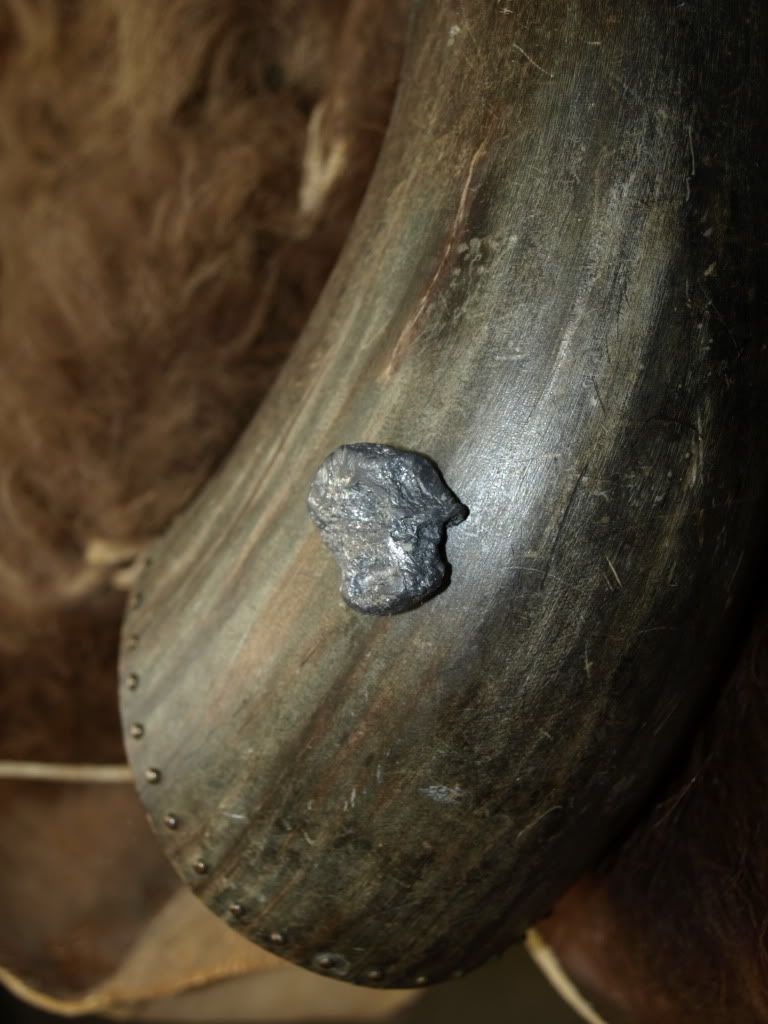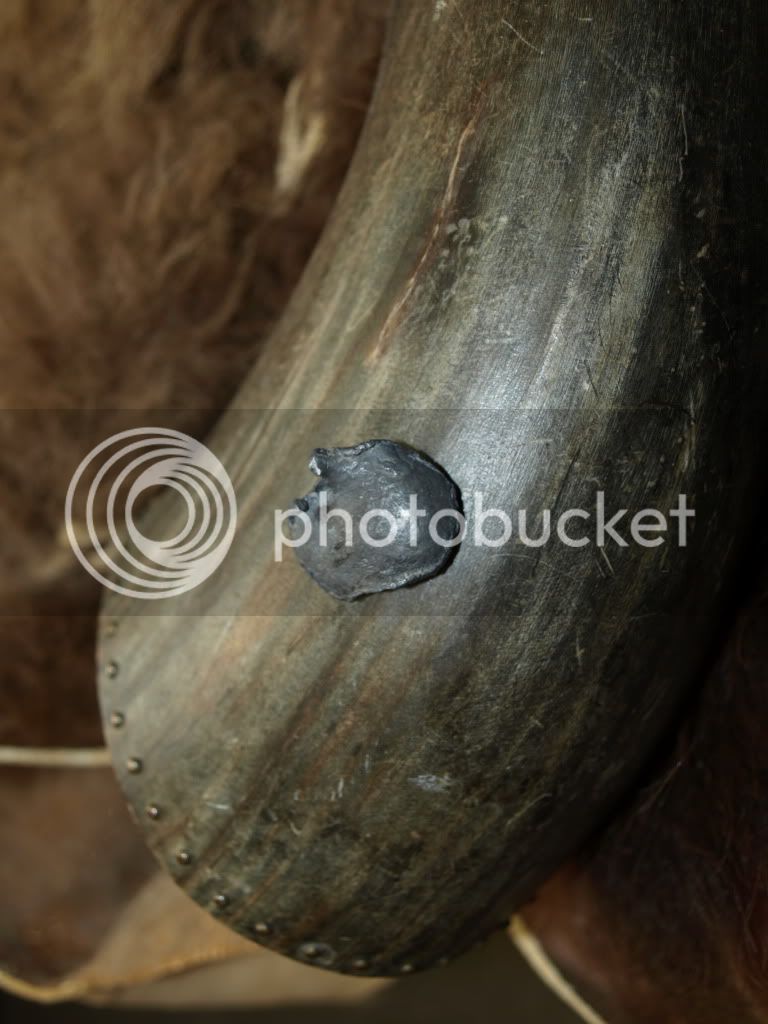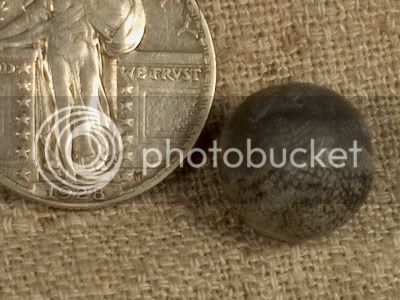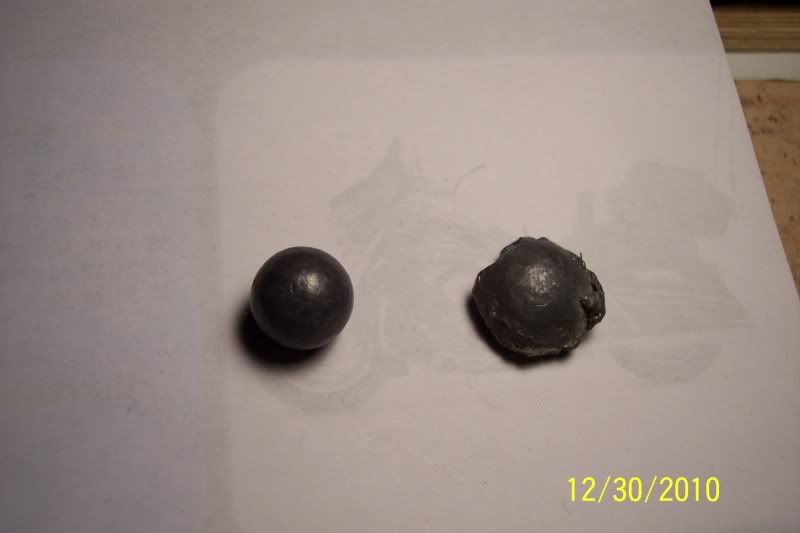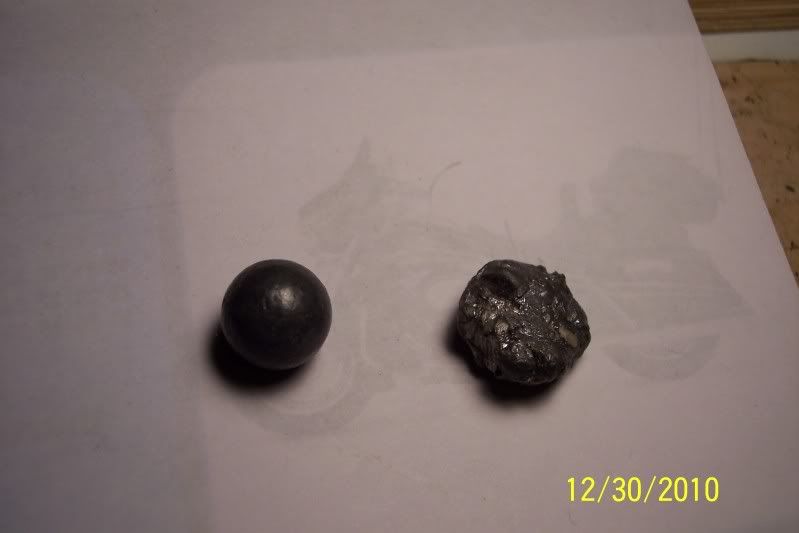Near 100% weight retention, and This kind of expansion are the Hallmark Characteristics of a pure lead ball, and how it expands in living flesh and bone.
Since deer are so small, only those shot from end to end, will give you an opportunity to recover a ball, and with the large caliber guns, even that is mostly a 50/50 chance. RoundBall's recovered .62 Lead round ball from under the skin of the hind leg is very typical of what happens to a heavy ball passing through a light -skinned animal like deer.
Wet newspapers, bound together with string, or placed in a sturdy box, make an excellent test medium when trying to see how your ball performs. The great thing about newspapers( and magazines) is that its fairly easy to pull them apart and find your ball.
( I learned this checking in deer for a couple of years for the State, where most of the deer were shot with 12 gauge( .72 cal.) slugs. We had more and more hunters use MLers during the second season, so I had plenty of opportunities( 600+ deer) to examine entrance, and exit wounds, where they existed, in the deer brought into the check station. This was 10 years before I became active in BP shooting.
The first year, the required list of questions to the hunters included asking about how many shots taken, how many hit any deer, where the shot struck( entrance wound), did the slug exit, and if so, where, etc. We didn't have to ask those questions my second year as a checker. But, successful hunters then, just as now, like to explain the hunt, the shot, the hits, the wound channel, etc. so I heard it all the second year, but didn't have to write it all down! PHEW!)
My very first penetration test( when I was 10 years old) was shooting a conical bullet into an Elm tree stump. This is a tough wood to split, and it took a couple of hours to find the slug. It entered the stump about 2 inches, then made a turn to the right and followed a growth ring around the right side of the stump, before coming to rest almost exactly Opposite the entry hole. Total length of penetration was 14 inches! Since we destroyed that stump finding that first bullet, and didn't have another stump available to do more testing, that was the end of my first penetration testing work.
Oh, the bullet was about 1/8" shorter, .020" smaller in diameter, but still retained its round nose shape and you could see the remains of the grease grooves in the rear area of the bullet. Weight retention was good, losing about 20% of its weight in that long passage through the stump-- Not bad for a cast lead bullet hitting a very tough medium. :hmm:
I will use wet newspapers to test balls and bullets any day instead of shooting at tree stumps!







